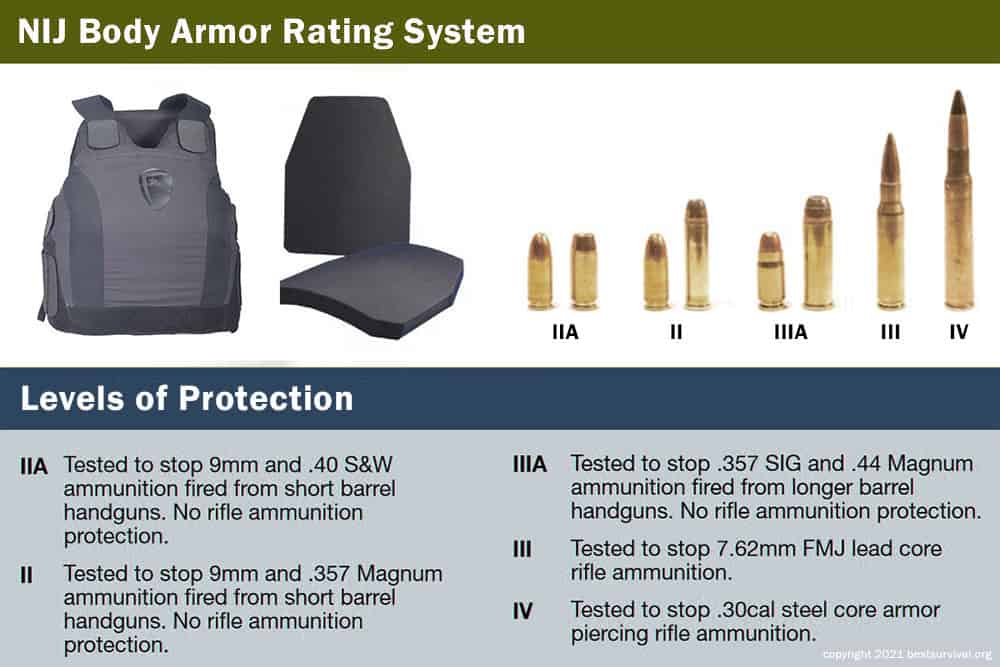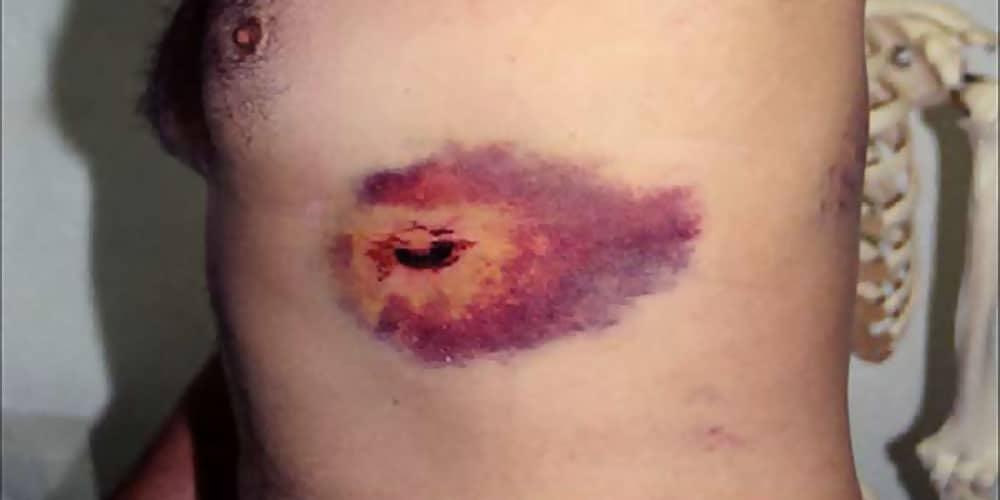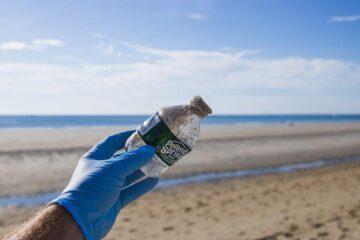On our “Best Body Armor” page we touched on a few body armor-related FAQs, but a subject like this is one that a lot of people are interested in and have a lot of questions about. So here is another collection of body armor FAQs.
Q: Will body armor stop every type of bullet?
A: Unfortunately, no (1). Soft body armor (made from fabrics such as Kevlar), will stop most small caliber handgun rounds, but will be useless against high velocity rifle rounds. A step up from soft body armor are steel and ceramic plates that slip into sleeves on a plate carrier vest. These will stop higher caliber handguns and some rifle shots. However, when you venture into high caliber rifles even Level IV body armor will not provide 100% guaranteed protection.
Q: What level of protection should I get?
The National Institute of Justice (2) publishes the definitive body armor standards that are followed by the military and law enforcement nationwide. They currently place body armor products into 1 of 5 levels of effectiveness. The levels range from Level IIA, which will stop small caliber handgun rounds, to Level IV that is designed to stop 30 caliber steel core rifle rounds. (See the chart below for details.) Which level of protection you need will depend on the threat you anticipate.
Q: What’s the difference between certified and compliant?
It should be no surprise that there are manufacturers out there trying to get around NIJ certification, since it isn’t easy to come by. Fortunately, the NIJ publishes a list of all currently available models of body armor that they have certified. You can see that list here. If it isn’t on this list, it isn’t NIJ certified. It’s that simple. You may see body armor sold online that says it’s “compliant” but that’s usually the manufacturer playing word games. If the product is not on the NIJ list, it’s probably not effective at stopping much of anything.
Q: Is tactical body armor concealable?
If you try hard enough you can conceal just about anything, but tactical body armor is not designed to be concealed. Tactical body armor vests are typically the kind that accept steel or ceramic plates. They also feature lots of MOLLE webbing (3) on the exterior to which you can attach pouches that hold extra clips, a gas mask, flares, grenades, pepper spray and more. Obviously concealing all that would be a Herculean task. When people speak of concealable body armor they’re almost always talking about soft Level IIA and II armor that can be easily slipped under a light jacket, or even a shirt.
Q: Will I feel anything if I get shot wearing body armor?
You certainly will. If you get hit squarely with a small caliber bullet fired from a pistol, say 100 feet away, you might feel like someone has punched you in the chest (or the back or the side) wearing brass knuckles. If the gun is more powerful or the shooter is closer you may feel like someone has hit you with a baseball bat or a sledge hammer. It’s not common but the blunt force trauma is sometimes so intense that it damages internal organs, breaks ribs or produces life-threatening shock (4).
Q: What’s the best way to clean body armor?
This is a sketchy subject because while some recommend tossing your soft armor into the washer, others state categorically that you’d have to have a few screws loose to do that. That’s because Kevlar and other fabric-based body armor is just that: fabric. If that fabric gets shmushed around in the washer there seems a decent chance it’s going to emerge a creased/wrinkled mess and you’ll need to replace it. Plate carriers, however, can be tossed into the machine if you wish (“gentle” cycle only). Just make sure you remove the plates before you do. And don’t put the plates back in until the vest is completely dry.
Q: How far away does the shooter have to be before body armor provides protection?
To the uninitiated this might seem a strange question, but the fact is body armor is pretty useless if someone fires at you from within arm’s length. In order to provide protection the shooter should be at least 15 feet distant for Level IIA, Level II and Level IIIA body armor. For Level III and Level IV body armor that’s designed for rifle shots, the shooter should be at least 45 – 50 feet away. If they’re any closer there’s little chance even steel or ceramic plates will be of much help.
Q: How can I determine the right size body armor for me?
Obtaining a snug but not-too-tight fit is essential in order to optimize the protective qualities of body armor. If it’s too loose it will flop around, leave vulnerable areas exposed and not absorb the force of the round very effectively. If it is too tight it will tend to ride up on you exposing much of your vulnerable midsection while restricting movement. While there are longer vests available, a standard bulletproof vest should end around your belly button. Keep in mind too that if you have put on 10 or 20 pounds or more since you bought your body armor you’ll probably need a larger size.
Q: Can civilians own and wear body armor?
Yes (5). Body armor is legal to buy and wear in all 50 states. You will need to be at least 18 years old to purchase it, although there is no background check, waiting period or federal registration involved. In Connecticut you can’t buy it online. Instead, you have to buy it in person via a face-to-face transaction. Buying it online or having it delivered to your home in Connecticut is a Class B misdemeanor. The only exception to the “anyone can buy and wear body armor” rule is someone who has been convicted of a felony. Everyone else is free to buy it and wear it as they see fit.




